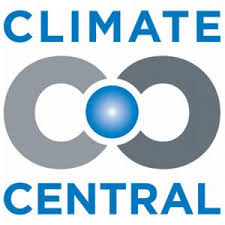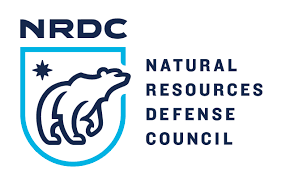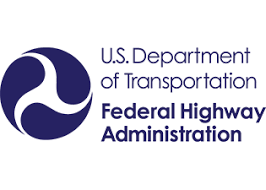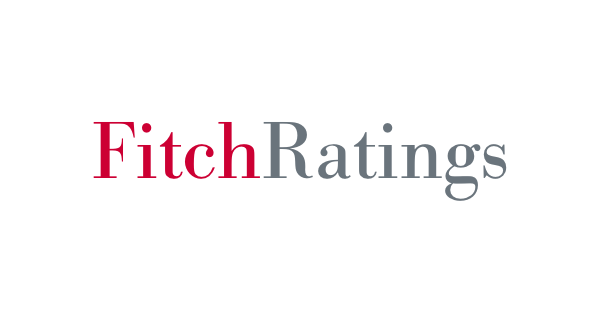Notes and Sources
How to compare hometowns using our Scorecards.
And where to find more detailed information.
(This page is the same for all Scorecards.)
Scorecards are not your normal “Best Places” reports We don’t evaluate restaurants, count golf courses, or review the culture scene. You may find a city in a Best-Places-to-Live magazine articles that gets low marks from Climate-Proof. That’s because we look at factors not normally considered by the popular press. Will drought ruin the golf courses? Will floods or sea level rise force the restaurants and art galleries to relocate? Will water-control requirements push City Hall to raise taxes and fees? Can other climate-driven changes threaten local families’ finances and wellbeing?
Two Reasons to use our Scorecards First, they highlight the dangers that your community is facing over the coming decades. With this information, you and your neighbors can take steps to build the physical and financial defenses – and the attitudes – you’ll need to safeguard your current community. Second, if you’re choosing a new hometown – perhaps because of the climate threats your current town faces – our Scorecards will help you evaluate how climate-proof a new hometown is likely to be.
The value’s in the details Although we highlight the Most Climate-Proof Towns in each state or two-digit Zip Code area, we do not give an overall rating to a town. This is because two towns that might get the same overall grades may have completely different underlying grades. Town A might get its overall rating based on heavy threats to property such as rainwater flooding or storm surge. Town B, with the same overall grade, might be safe from property threats but will run out of water in a few decades, while its shaky finances will make investing in new water sources very expensive. An overall grade obscures these important differences.
You can get even more local Not all the indicators we use are available for the exact locality you care about. Measurements such as Heating/Cooling needs, Cost of Living, Medical Costs, and Housing Costs are compiled variously for towns or counties or whole Metro Areas. But in some cases you can get data down to the particular street or property. We tell you how below. In addition to the sources we point you to, some of the most specific information is available at your City Hall.
Some measurements are simply not available in a form we can reliably present in our Scorecards. In these cases, we report No Data or No Rating.
A word about data reliability. Climate-Proof collects measurements from reliable sources and presents the data on our Scorecards. We do not create any of the data used on this site. If you see any information on a Scorecard that seems inaccurate, please contact us immediately and we will double-check the source.
A word about the letter grades. We think a B+ is more meaningful than a raw measurement of, for instance, “1027 degree days.” That’s why we grade each measurement. If you want to understand how we apply our grades to the data, you can see the conversions for each measurement on our Scorecard Grading page.
Here’s what you should know about Climate-Proof’s specific ratings.
How to compare hometowns using our Scorecards.
And where to find more detailed information.
(This page is the same for all Scorecards.)
Scorecards are not your normal “Best Places” reports We don’t evaluate restaurants, count golf courses, or review the culture scene. You may find a city in a Best-Places-to-Live magazine articles that gets low marks from Climate-Proof. That’s because we look at factors not normally considered by the popular press. Will drought ruin the golf courses? Will floods or sea level rise force the restaurants and art galleries to relocate? Will water-control requirements push City Hall to raise taxes and fees? Can other climate-driven changes threaten local families’ finances and wellbeing?
Two Reasons to use our Scorecards First, they highlight the dangers that your community is facing over the coming decades. With this information, you and your neighbors can take steps to build the physical and financial defenses – and the attitudes – you’ll need to safeguard your current community. Second, if you’re choosing a new hometown – perhaps because of the climate threats your current town faces – our Scorecards will help you evaluate how climate-proof a new hometown is likely to be.
The value’s in the details Although we highlight the Most Climate-Proof Towns in each state or two-digit Zip Code area, we do not give an overall rating to a town. This is because two towns that might get the same overall grades may have completely different underlying grades. Town A might get its overall rating based on heavy threats to property such as rainwater flooding or storm surge. Town B, with the same overall grade, might be safe from property threats but will run out of water in a few decades, while its shaky finances will make investing in new water sources very expensive. An overall grade obscures these important differences.
You can get even more local Not all the indicators we use are available for the exact locality you care about. Measurements such as Heating/Cooling needs, Cost of Living, Medical Costs, and Housing Costs are compiled variously for towns or counties or whole Metro Areas. But in some cases you can get data down to the particular street or property. We tell you how below. In addition to the sources we point you to, some of the most specific information is available at your City Hall.
Some measurements are simply not available in a form we can reliably present in our Scorecards. In these cases, we report No Data or No Rating.
A word about data reliability. Climate-Proof collects measurements from reliable sources and presents the data on our Scorecards. We do not create any of the data used on this site. If you see any information on a Scorecard that seems inaccurate, please contact us immediately and we will double-check the source.
A word about the letter grades. We think a B+ is more meaningful than a raw measurement of, for instance, “1027 degree days.” That’s why we grade each measurement. If you want to understand how we apply our grades to the data, you can see the conversions for each measurement on our Scorecard Grading page.
Here’s what you should know about Climate-Proof’s specific ratings.
PHYSICAL DAMAGE
Some localities are in the crosshairs of extreme weather events, while others are naturally more climate-proof. These events are dangerous not just to our assets and our physical safety, but also to the local economy and to our government’s tax base and budget.
Flood Risk – FEMA This grade bases flood risk grade on the relative cost of flood insurance under the National Flood Insurance Program run by FEMA. Counties with a higher premium for a given dollar value of insurance coverage are considered more risky for flood damage. Flood risk varies widely from home to home, depending on topography. You can see the risk level assigned to specific locations on the FEMA flood maps, available online or at your town hall. However, it’s important to realize that even homeowners whose properties are safe from flooding face potentially high local taxes (see Coastal County below) and inconvenience by living in an area of significant flood risk.

Flood Risk – ATTOM Flooding is one of the elements in the risk index for natural hazards to American homes compiled (2017) by ATTOM Data Solutions, which supplies comparative property data to the real estate industry. Flood risk in each county is based on the percentage of homes located in high-risk flood zones. It does not evaluate smaller areas within a county nor individual properties. You can see additional risk information summarized by county on their excellent map. For more localized flood information, take a look at FEMA’s flood maps.

Storm Surge Risk Storm surge is one of the elements in ATTOM Data Solutions’ 2017 risk index for natural hazards to American homes. Visit them for more detailed risk information. Their comparative risk of storm surge is based on two factors: 1) the number and intensity of local hurricane strikes historically, from the National Hurricane Center and 2) the percentage of homes located in flood zones identified by FEMA as having a risk of “storm-induced waves,” code V and VE. It does not factor in the increasing intensity of storms, nor the rise of sea level.

Overall Housing Risk ATTOM Data Solutions, which supplies property data to the real estate industry, estimates a 2017 comparative U.S. Natural Hazard Risk Index by county. Not only do homeowners in higher risk areas face greater costs from damage, the company has determined that home values are weaker in markets with high risks, especially for hurricanes and floods. A town can have a decent grade from ATTOM on average but with one big risk hidden within that average. Check the six components individually on the ATTOM website, which has an easy-to-use interactive map.

Sea Level Rise Climate Central has created a forecast tool predicting overall physical and financial vulnerabilities in coastal towns. Projected sea level rise for various localities are based on the National Climate Assessment intermediate high sea level rise scenario. Physical and financial impacts will vary widely from town to town and from property to property.

Wildfire Risk The USDA Forest Service’s Fire Modeling Institute produces this long-term risk forecast (2014) for costly and dangerous wildfires that would be difficult for suppression resources to contain. You can see risk levels shown on a US map. Ratings are medians across each county.
Blog posts about Physical Threats

PREPARATION & ATTITUDE
Some towns are more resilient when facing external stresses such as natural disasters. If your hometown is well-informed, forward-looking, and proactive about protecting against the effects of climate change, you have a better chance of minimizing the costs and disruptions.
Social Vulnerability We base this grade on the Social Vulnerability Index created by the Hazards and Vulnerability Research Institute at the university of South Carolina and the US Department of Health and Human Services. It rates counties on their ability to protect residents and avoid costs from disasters. It looks at a large number of factors such as family structure, age, language barriers, vehicle availability, medical disabilities, and healthcare access to evaluate the county’s preparation for and response to disasters. You can examine the the 2016 data in great detail.

State Preparedness Grade In 2015 Climate Central and ICF International examined the concrete actions being taken in each state to reduce current climate-related risks, to assess vulnerability to future risks, to plan for future risks, and to reduce future risks. Their website provides Preparedness Report Cards for each state, along with Summaries of specific preparedness actions being taken (e.g. Florida) and possible steps being ignored.
Note: preparedness does not by itself measure safety.

Recognition of Community Dangers Surveys by The Pew Research Center indicate that far fewer Republicans believe droughts, storms, and sea level rise will increase due to climate change. By contrast Democrats are more likely to believe that negative effects of climate change are likely, and that policy actions can make a big difference. These differences suggest that Democratic-leaning towns are generally more likely to take protective measures early. Voting data comes from Townhall where you can inspect interactive maps for details.
It is important to note that these correlations are not universal and are changing fast. Use this score as an indicator only, and do your own research to compare various localities’ attitudes.

Recognition of Personal Dangers Do local families understand the costly effects of climate change heading their way? Surveys in 2016 by the Yale Program on Climate Change Communication and the George Mason Center for Climate Change Communication estimate by US county the percentage of adults who think global warming will harm them personally (the range is 29-57%.) We estimate the higher the percentage, the more those residents are likely to take concerted steps to protect their finances, surroundings, and neighbors.
Blog posts about Attitudes

HEALTH COSTS
The slow-growing but expensive impacts on our health from climate change can be difficult to notice. Warming increases the production of pollen and the spread of disease. Sewer overflows contaminate downstream land and water. And there is evidence of growing mental health problems caused by climate disruptions.
Tree Pollen Change As the climate warms, some states have higher risks of large increases in pollen from ragweed and trees. The US Global Change Research Program coordinates research in 13 federal departments on expected changes in the global environment and their implications for society. Research on the effect of increasing CO2 concentrations on plants and the resultant impacts on human health, reported by the National Wildlife Federation in 2010 have predicted higher impacts and long-term costs for the 50 million allergy and asthma sufferers in the US.
Blog posts about Health Costs

STATE & LOCAL COSTS
A big portion of our growing costs from climate change will reach us through state and local government, as they are called on to cope with increasing effects such as our water systems, flooding protections. Some localities are better prepared for these costs than others.
Coastal County Families living near the ocean, far more than those inland, face the costs of wind-driven water damage to their property from increasingly severe storms. And beyond the direct costs to individual properties, many county and municipal governments are starting to spend taxpayers’ money to build protections against these growing dangers, including sea-level rise. We have used NOAA’s definition and list of coastal counties.

Coastal State A state with a high percentage of its population living near the ocean is likely to incur long-term costs for preventing and fixing damage from the predicted increase in ocean storms and rise in sea levels. Although many of these costs will be borne by the affected residents, many will translate into future state tax increases or other costs that will be shared by all state residents. As a measure of the potential impact of these expenditures, we base this grade on the percentage of a state’s population that the Census Bureau says lives in that state’s seacoast counties (2008). We have not included states on the Great Lakes, which are less vulnerable.

Drought Risk Drought is high on the list of threats to many American communities. Two big causes: the changing climate is reducing snowpack that supplies states southwest of the Rockies, and heavy water use is depleting major aquifers that supply states just east of the Rockies. Not only do communities face water shortages, but regional industries such as agriculture which use large quantities of water, are endangered. Based on U.S. Geological Survey data, The Natural Resources Defense Council in 2010 made a county-by-county projection of the risk of water shortages by 2050.

Deficient Bridges The budgets of many state governments will be strained by needed repairs to infrastructure. The Federal Highway Administration inspects 700,000 highway bridges in the US every two years, noting their condition. ‘Deficient bridges’ is a technical designation that is an indication of a state’s total transportation infrastructure needs. As of 2015, some states (Pennsylvania 26.5%) face major repairs to far more bridges in deficient condition than others (Florida 2.4%).You can see the condition of bridges near any location in the US at Transportation for America’s website.
Consider that high infrastructure needs in your area will make it less likely state and local authorities can spend on building protections from the effects of climate change.

State & Local Tax Burden Finding funds for the costs of climate-proofing your town is more likely where taxes are relatively low today. State and local governments are under great fiscal pressures likely to result in increased taxes over the coming years. According to WalletHub, based on figures from the Tax Policy Center, these taxes vary widely. To determine the residents with the biggest tax burdens, WalletHub compared the 50 states across the three tax types of state tax burdens — property taxes, individual income taxes an ranged from from 4.9% in Alaska to 13.0% in New York. Latest figures are for 2018, but expect the new tax code to make significant change in 2019.

Municipal Bond Rating Many towns and counties issue debt (municipal bonds) to finance long-term projects. Some, however, are expected to have a hard time paying back their debt, resulting in low ratings from bond-rating agencies. For towns that do have outstanding debt, ratings from Moody’s, Fitch and Standard & Poors are indicators of the issuer’s fiscal strength or weakness.
Bond ratings are designed to measure risk to investors. From a resident’s point of view, a low grade indicates fiscal pressures that may result in higher taxes or reduced spending on municipal services in the future. But a high grade does not necessarily mean good services; a town may have earned a good rating by cutting back on its services such as police, fire, education, roads and transportation, sanitation, cultural services, parks, conservation, etc. To fully understand a town’s financial strength, you should read a town’s rating report, available free at one or more of the agencies above, plus do some local investigation.



State Unfunded Pensions The Pew Charitable Trusts analyzed state pension funding gaps for fiscal year 2016, the most recent year for which comprehensive data are available. When a state’s pension payments are not covered by funds saved for that purpose, the payments must come out of the state’s current revenues. This reduces the state’s ability to provide current services. For more information about causes and effects of these shortfalls, visit The Pew Charitable Trusts.

State Financial Reserves Many of the costs likely to rise steeply as a result of global warming, like infrastructure, disaster, environmental, and health – are currently federal responsibilities but are likely to be transferred to the states. To pay for these new costs, state and local taxes will need to rise dramatically. But at the end of 2017 according to the The Pew Charitable Trusts, average state Reserves and Rainy Day Funds across the country vary widely – on average covering less than one month’s expenditures at current levels. Some states hold almost no reserves.
Blog posts about State & Local Costs

FOOD SUPPLY
Few of us question the reliability our food sources today, but many of the effects of climate change pose dangers to local food supplies. Widespread drought, threats to our long-distance transportation systems, heat waves, and the northern movement of Plant Hardiness Zones. While local agriculture is unlikely to feed a town for long, it can help to increase short-term food security.
Cropland The average item on your supermarket shelf has come more than 1,000 miles. If damages from climate change hurt yield in America’s farm regions, and if trucking costs rise, we may become more reliant on local farms. As an indicator of whether you are likely to benefit from local food production, we have calculated each county’s current cropland per resident. This is a very rough indicator, as it does not include neighboring counties nor distinguish what crops can be grown locally. You can consult the US Dept. of Agriculture], the source of these numbers, to get a better idea of what agricultural activity is nearby.

Local Growers The number of farmers’ markets has been growing steadily, and their presence is an indicator that local consumers will have some access to local produce. The US Department of Agriculture counts farmers’ markets by county. The latest count is from August 2017. You can search for farmers’ markets near you at the USDA or Local Harvest.
Blog posts about Food Challenges

ENERGY
Energy costs are low today and are hard to forecast. But choosing to live where our energy needs are already low, reduces our risks if the costs of fossil fuels rise significantly. This could happen because of market shifts, but there are other potential developments that could impose big costs such as court rulings against oil companies, enforcement of recently dropped environmental protections, or legislative actions to impose carbon taxes.
Need for Heating/Cooling Degree days measure temperature variance from ‘comfortable’. The measure is in average degrees per day for the year. For instance 3,650 heating degree days means homes in the area need to raise their temperatures an average of 20 degrees (3,650 / 365) per day over six months to stay at 65 degrees. 1,825 cooling degree days means a home in that locality needs to lower its temperature an average of 10 degrees per day over six months to stay at 72 degrees. Degree days are measured daily and are highly variable, so we use the yearly average for a locality. The latest (2015) NOAA’s Climatic Data contain long-term temperature averages at 7,500 weather stations across the country, including the number of degree days above 72 (when people start to turn on the air conditioning) and below 65 (when they start to turn on the heat).
Localities with low heating and cooling degree days need little heating and cooling, saving energy costs. If average temperatures rise in coming years as predicted, places that today have high heating needs should save some money; those with high cooling needs will likely pay more.

Sunlight As electricity costs rise, there comes a point where solar panels become money-savers. This naturally comes faster where there’s lots of sunshine, which can vary widely even at the same latitude. For instance, compared to East Texas, West Texas experiences 75 percent more direct solar radiation. Places with low ‘insolation,’ as it’s called, require a larger and more expensive solar-panel installation for a given output. The National Solar Radiation Database contains measurements of average daily total solar radiation (watt-hours per square meter) at over 800 stations across the country. For each town, we have used data from the nearest station, which range from 1549 in northern Alaska to 5663 in El Paso, TX. Latest data is from 2012.
It goes without saying that, within a town, direct sunlight can vary widely among house lots can, based on shade and roof orientation.

Wind Power As electricity costs rise, there comes a point where domestic, community, or municipal wind turbines become money-savers. This naturally comes earlier where average wind strength is high.The National Water and Climate Center collects wind strength from almost 400 measuring stations across the country. Annual averages can vary by large amounts from location to location. You can see wind maps with more detailed information at NOAA.
Even these data are general indicators only. Wind strength can vary within much shorter distances, even from house to house, so it makes sense to obtain a wind measurement at exactly the place you might consider erecting a turbine.

Net Metering Making your own electricity with photovoltaic cells or wind turbines is less costly if you can buy electricity when you are not making enough for your needs or sell electricity when you are making more than you need. This arrangement with the local utility is called net metering. Some states have more favorable net-metering regulations than others. The Interstate Renewable Energy Council has defined the elements of an effective net metering policy and grades states (2017) against these criteria.

Total Energy Costs In 2017 WalletHub calculated the average household energy cost by state, based on the 2017 price and usage of four energy sources. The result gives an idea of the impact of energy on the average household’s finances in each state, based to their location and consumption habits.
Blog posts about Energy Costs

COST OF LIVING
Climate change is imposing new, unexpected, and stealthy drains on our family finances. If we are to prevent those new costs from swamping our budget, it will pay to live where existing costs are already low.
Climate Impact on Local GDP Most effects of climate change are predicted to hurt the economy, e.g. the impacts of heat on health, crops, labor productivity, and energy expenditures, and of storms and sea level rise on property values. But some regions of the country – where heat improves crops, health, etc. – will have a net benefit from climate effects. This study was published in 2017 by twelve scientists from academic and research organizations. You can read the projections in Science magazine.

Cost Of Living Cost of living measures for a metropolitan area are surveyed and compiled by the Council for Community and Economic Research. Coverage is not complete, and we have included their overall cost of living grade only for Metropolitan areas for which they report. C2ER’s data (early 2018) are very detailed (T-bone steak, optometrist visit, haircut, etc.) and (for a price) are available to you online, including the ability to compare two locations side-by-side.

How long $1 million will last in retirement GOBankingRates found the average total expenditures for people 65 and older, including groceries, housing, utilities, transportation, healthcare and other costs. Multiplying by the cost of living index in each state results in the average expenditure cost for each state. Results range in 2017 from Hawaii the most expensive state where $1 million last only 11 years 11 months, to Mississippi, the least expensive at 26 years, 4 months.

Healthcare Costs Healthcare costs can vary widely across the country – by a factor of four and more for the same services! A few communities have managed to substantially reduce their health costs recently, but your family budget will be better served if you live in one of the already-low-cost localities.The majority of medical costs are incurred late in life and are tracked in great detail by Medicare. But statisticians have found that where healthcare costs are high for seniors they are high for everyone. The Dartmouth Health Atlas presents these cost statistics in great detail by Hospital Service Area.

Healthcare Quality You might think that higher-cost healthcare means better healthcare. There is, however, almost no correlation between spending and outcomes. While healthcare quality in a locality can change over time, it tends to do so slowly. Choosing a location with lower-cost, higher-quality healthcare is possible, and can save a family huge amounts of money over their lifetimes.
Medicare collects information about the quality of patient care in U.S. hospitals and nursing homes by reading medical records looking for correct or incorrect treatment. The results are available online at the Quality Care Finder. This useful site allows you to check detailed measures of effective care for a variety of medical conditions. (Data are available for most but not all hospitals.) We have used quality measures at a locality’s nearest hospitals in our ratings.

Housing Cost The Zillow Home Value Index is based on a statistical model estimating the value of 67 million single-family homes in the US, not just those that sold recently. In estimating the many home valuations that go into a Zindex, Zillow considers tax assessments and comparable sales, plus location, lot size, square footage, number of bedrooms and bathrooms and many other details. The Zindex helps you to compare different towns. Note: While Zillow seems to be a good indicator of average home values for an area, it can be wildly wrong about the price of a particular house.

TRANSPORTATION
Transportation is the second biggest cost category for the average American family. It is very dependent on 1) fuel prices and 2) where you live. You can’t control the first, but you choose to live where your transportation costs are likely to remain low in the face of climate change effects.
Walk Score Walk Score measures how easy and safe it is to live a car-lite lifestyle—not how pretty the area is for walking. Walk Scores range from “Daily errands can be accomplished on foot” to “Totally car-dependent.” We have used the 2017 average Walk Score for each city, but scores can vary dramatically within a community, so you need to look up the Walk Scores for the exact street addresses that interests you.

Bicycle-Friendly
The League of American Bicyclists rates towns by how well they provide safe biking infrastructure, education of both bikers and drivers, encouragement to bikers, and enforcement of bike-related rules. Note: towns self-select by applying for the award, and some towns emphasize recreational biking over the ability to replace the car for daily-life trips. Most towns are not rated, but the League provide useful information for each state.
Blog posts about Transportation Costs

How to compare hometowns using our Scorecards.
And where to find more detailed information.
(This page is the same for all Scorecards.)
Scorecards are not your normal Best Places reports We don’t evaluate restaurants, count golf courses, or review the culture scene. You may find a city in a Best-Places-to-Live magazine articles that gets low marks from Climate-Proof. That’s because we look at factors not normally considered by the popular press. Will drought ruin the golf courses, or floods force the restaurants and art galleries to relocate? Will water-control requirements push City Hall to raise taxes and fees, or other climate-driven changes threaten local families’ finances and wellbeing?
Two Reasons to use our Scorecards First, they highlight the dangers that your community is facing over the coming decades. With this information, you and your neighbors can take steps to build the physical and financial defenses – and the attitudes – you’ll need to safeguard your community. Second, if you’re choosing a new hometown – perhaps because of the climate threats your current town faces – the Scorecards will help you evaluate how climate-proof a new hometown is likely to be.
The value’s in the details Although we highlight the Most Climate-Proof Towns in each state or two-digit Zip Code area, we do not give an overall rating to a town. This is because two towns that might get overall ratings of C+ may have completely different underlying grades (which can range from A+ to D-). Town A might get its C+ overall rating based on heavy threats to property (rainwater flooding or storm surge) while Town B, also with a C+ overall rating, is safe from those property threats but will run out of water in a few decades, and its shaky finances may prevent it from investing in new water sources. An overall grade obscures these important differences.
You can get even more local Not all the indicators we use are available for the exact locality you specify. Measurements such as Heating/Cooling needs, Cost of Living data, Medical Costs, and Housing Costs are compiled variously for towns or counties, sometimes whole Metro Areas. But in some cases you can get data for a particular street or property. We tell you how below. In addition to the sources we point you to, some of the most specific information is available at your City Hall.
Some measurements are simply not available in a form we can reliably present in our Scorecards. In these cases, we report No Data or No Rating.
Here’s what you should know about Climate-Proof’s specific ratings.
PHYSICAL DAMAGE
Some localities are in the crosshairs of extreme weather events, while others are naturally more climate-proof. These events are dangerous not just to our assets and our physical safety, but also to the local economy and to our government’s tax base and budget.
 Natural Hazard Housing Risk ATTOM Data Solutions, a curator and provider of US property data, estimates their U.S. Natural Hazard Risk Index based on earthquakes, floods, hail, hurricane storm surge, tornadoes and wildfires. Not only do homeowners in higher risk areas face greater costs from damage, the company has determined that home sales are weaker in markets with high risks, especially for hurricanes, and floods. The ATTOM site has an excellent map of the index.
Natural Hazard Housing Risk ATTOM Data Solutions, a curator and provider of US property data, estimates their U.S. Natural Hazard Risk Index based on earthquakes, floods, hail, hurricane storm surge, tornadoes and wildfires. Not only do homeowners in higher risk areas face greater costs from damage, the company has determined that home sales are weaker in markets with high risks, especially for hurricanes, and floods. The ATTOM site has an excellent map of the index.
 Flood Risk from FEMA This grade bases flood risk grade on the relative cost of flood insurance under the National Flood Insurance Program run by FEMA. Counties with a higher premium for a given dollar value of insurance coverage are considered more risky for flood damage. Flood risk varies widely from home to home, depending on topography. You can see the risk level assigned to specific locations on the FEMA flood maps, available online or at your town hall. However, it’s important to realize that even homeowners whose properties are safe from flooding face potentially high local taxes (see Coastal County below) and inconvenience by living in an area of significant flood risk.
Flood Risk from FEMA This grade bases flood risk grade on the relative cost of flood insurance under the National Flood Insurance Program run by FEMA. Counties with a higher premium for a given dollar value of insurance coverage are considered more risky for flood damage. Flood risk varies widely from home to home, depending on topography. You can see the risk level assigned to specific locations on the FEMA flood maps, available online or at your town hall. However, it’s important to realize that even homeowners whose properties are safe from flooding face potentially high local taxes (see Coastal County below) and inconvenience by living in an area of significant flood risk.
 Flood Risk from ATTOM Flooding is one of the elements in ATTOM Data Solutions’ risk index for natural hazards to American homes.Risks are summarized by county on their excellent map. Flood risk is based on the percentage of homes in each county located in high-risk flood zones, and may does not evaluate areas within the county or individual properties. For more localized flood information, see FEMA’s flood maps.
Flood Risk from ATTOM Flooding is one of the elements in ATTOM Data Solutions’ risk index for natural hazards to American homes.Risks are summarized by county on their excellent map. Flood risk is based on the percentage of homes in each county located in high-risk flood zones, and may does not evaluate areas within the county or individual properties. For more localized flood information, see FEMA’s flood maps.
 Storm Surge Risk Flooding is one of the elements in ATTOM Data Solutions’ risk index for natural hazards to American homes. Storm surge risk is based on two factors: 1) the number and intensity of hurricane strikes historically, from the National Hurricane Center (NHC) and2) the percentage of homes located in flood zones identified by FEMA as having a risk of “storm-induced waves, codeV and VE.
Storm Surge Risk Flooding is one of the elements in ATTOM Data Solutions’ risk index for natural hazards to American homes. Storm surge risk is based on two factors: 1) the number and intensity of hurricane strikes historically, from the National Hurricane Center (NHC) and2) the percentage of homes located in flood zones identified by FEMA as having a risk of “storm-induced waves, codeV and VE.
![]() Wildfire Hazard Potential The USDA Forest Service’s Fire Modeling Institute produces a long-term forecast of risk for wildfire that would be difficult for suppression resources to contain. Ratings are medians across each county.
Wildfire Hazard Potential The USDA Forest Service’s Fire Modeling Institute produces a long-term forecast of risk for wildfire that would be difficult for suppression resources to contain. Ratings are medians across each county.
PREPARATION & ATTITIDE
Some towns are more resilient when facing external stresses such as natural disasters. If your hometown is well-informed, forward-looking, and proactive about protecting against the effects of climate change, you have a better chance of minimizing the costs and disruptions.
 Social Vulnerability Some counties are far better able to cope with disasters than others. We base this grade on the Social Vulnerability Index created by the Hazards and Vulnerability Research Institute at the University of South Carolina which looks at a large number of factors such as family structure, age, language barriers, vehicle availability, medical disabilities, and healthcare access in the preparation for and response to disasters.
Social Vulnerability Some counties are far better able to cope with disasters than others. We base this grade on the Social Vulnerability Index created by the Hazards and Vulnerability Research Institute at the University of South Carolina which looks at a large number of factors such as family structure, age, language barriers, vehicle availability, medical disabilities, and healthcare access in the preparation for and response to disasters.
 Recognition of the effects of Global Warming Surveys by The Pew Research Center indicate that far fewer Republicans believe droughts, storms, and sea level rise will increase due to climate change. By contrast Democrats are more likely to believe that negative effects of climate change are probable and that policy actions can make a big difference. These differences suggest that Democratic-leaning towns are generally more likely to take protective measures early. It is important to note that these correlations are not universal. Use this score as an indicator that research within a town is needed.
Recognition of the effects of Global Warming Surveys by The Pew Research Center indicate that far fewer Republicans believe droughts, storms, and sea level rise will increase due to climate change. By contrast Democrats are more likely to believe that negative effects of climate change are probable and that policy actions can make a big difference. These differences suggest that Democratic-leaning towns are generally more likely to take protective measures early. It is important to note that these correlations are not universal. Use this score as an indicator that research within a town is needed.
 Recognition of Personal Dangers Do a town’s residents understand the costly effects of climate change heading their way? Surveys by the Yale Program on Climate Change Communication and the George Mason Center for Climate Change Communication estimate by US county the percentage of adults who think global warming will harm them personally. Presumably the higher the percentage, the more those residents are likely to take concerted steps to protect their surroundings and their finances.
Recognition of Personal Dangers Do a town’s residents understand the costly effects of climate change heading their way? Surveys by the Yale Program on Climate Change Communication and the George Mason Center for Climate Change Communication estimate by US county the percentage of adults who think global warming will harm them personally. Presumably the higher the percentage, the more those residents are likely to take concerted steps to protect their surroundings and their finances.
HEALTH COSTS
The slow-growing but expensive impacts on our health from climate change can be difficult to notice. Warming increases the production of pollen and the spread of disease. Sewer overflows contaminate downstream land and water. And there is evidence of growing mental health problems caused by climate disruptions.
 Pollen As the climate warms, some states have higher risks than others of seeing large increases in pollen from ragweed and trees. The US Global Change Research Program, coordinates research in 13 federal departments on expected changes in the global environment and their implications for society. Research on the effect of increasing CO2 concentrations on plants and the resultant impacts on human health, reported by the National Wildlife Federation have indicated higher impacts and long-term costs to the 50 million allergy and asthma sufferers in the US.
Pollen As the climate warms, some states have higher risks than others of seeing large increases in pollen from ragweed and trees. The US Global Change Research Program, coordinates research in 13 federal departments on expected changes in the global environment and their implications for society. Research on the effect of increasing CO2 concentrations on plants and the resultant impacts on human health, reported by the National Wildlife Federation have indicated higher impacts and long-term costs to the 50 million allergy and asthma sufferers in the US.
STATE & LOCAL COSTS
A big portion of our growing costs from climate change will reach us through state and local government, as they are called on to cope with increasing effects such as our water systems, flooding protections. Some localities are better prepared for these costs than others.

Drought Risk Drought is high on the list of threats to many American communities. Two big examples: the changing climate is reducing snowpack that supplies states southwest of the Rockies, and heavy use is depleting major aquifers that supply states just east of the Rockies. Not only do communities face water shortages, but regional industries such as agriculture which use large quantities of water, are endangered. Based on U.S. Geological Survey data, The Natural Resources Defense Council has made a county-by-county projection of the risk of water shortages by 2050.
 Deficient Bridges The budgets of many state governments will be strained by needed repairs to infrastructure, especially roads. The Federal Highway Administration inspects 700,000 highway bridges in the US every two years, noting their condition. Some states face major repairs to far more bridges in deficient condition (Pennsylvania 26.5%) than others (Florida 2.4%).You can see the condition of bridges near any location in the US at Transportation for America’s website.
Deficient Bridges The budgets of many state governments will be strained by needed repairs to infrastructure, especially roads. The Federal Highway Administration inspects 700,000 highway bridges in the US every two years, noting their condition. Some states face major repairs to far more bridges in deficient condition (Pennsylvania 26.5%) than others (Florida 2.4%).You can see the condition of bridges near any location in the US at Transportation for America’s website.
 Local Tax Burden There are obvious financial benefits to living where taxes are relatively low. State and local governments are today under great fiscal pressures which may result in increased taxes over the coming years. According to the Tax Foundation, these taxes vary widely. As a percentage of income they range from from 7.0% in Alaska to 12.8% in New York. Latest figures are an average of 2007-2010 rates.
Local Tax Burden There are obvious financial benefits to living where taxes are relatively low. State and local governments are today under great fiscal pressures which may result in increased taxes over the coming years. According to the Tax Foundation, these taxes vary widely. As a percentage of income they range from from 7.0% in Alaska to 12.8% in New York. Latest figures are an average of 2007-2010 rates.
 Coastal County Families living near the ocean face the risk of wind-driven water damage to their property from increasingly severe storms. But even if their neighborhood is unscathed, many county and municipal governments are starting to spend lots of taxpayers money to mitigate these growing dangers, and to prepare for sea-level rise in general. We have used NOAA’s definition and list of coastal counties.
Coastal County Families living near the ocean face the risk of wind-driven water damage to their property from increasingly severe storms. But even if their neighborhood is unscathed, many county and municipal governments are starting to spend lots of taxpayers money to mitigate these growing dangers, and to prepare for sea-level rise in general. We have used NOAA’s definition and list of coastal counties.
 Coastal State A state with a high percentage of its population living near the ocean is likely to incur long-term costs for preventing and fixing damage from the predicted increase in ocean storms and rise in sea levels. Although many of these costs will be borne by the affected residents, many will translate into future state and local tax increases or other costs that will be shared by all state residents. As a measure of the potential impact on a state’s budget of these expenditures, we base this grade on the percentage of a state’s population that the US Census says lives in that state’s seacoast counties. States on the Great Lakes, while they face some storm related-dangers, are not included as Coastal States.
Coastal State A state with a high percentage of its population living near the ocean is likely to incur long-term costs for preventing and fixing damage from the predicted increase in ocean storms and rise in sea levels. Although many of these costs will be borne by the affected residents, many will translate into future state and local tax increases or other costs that will be shared by all state residents. As a measure of the potential impact on a state’s budget of these expenditures, we base this grade on the percentage of a state’s population that the US Census says lives in that state’s seacoast counties. States on the Great Lakes, while they face some storm related-dangers, are not included as Coastal States.
 Municipal Bond Rating Many towns and counties issue debt (municipal bonds) to finance long-term projects. Some, however, are having a hard time paying back their debt, resulting in low ratings from bond-rating agencies. For towns that do have outstanding debt, ratings from Moody’s, Fitch and Standard & Poors are indicators of the issuer’s fiscal strength. Bond ratings are designed to measure risk to investors.
Municipal Bond Rating Many towns and counties issue debt (municipal bonds) to finance long-term projects. Some, however, are having a hard time paying back their debt, resulting in low ratings from bond-rating agencies. For towns that do have outstanding debt, ratings from Moody’s, Fitch and Standard & Poors are indicators of the issuer’s fiscal strength. Bond ratings are designed to measure risk to investors.  From a resident’s point of view, a low grade does indicate fiscal strains that may result in higher taxes or reduced spending on municipal services in the future. But a high grade does not necessarily mean good services; a town may have earned a good rating by cutting back on its services such as police, fire, roads and transportation, sanitation,
From a resident’s point of view, a low grade does indicate fiscal strains that may result in higher taxes or reduced spending on municipal services in the future. But a high grade does not necessarily mean good services; a town may have earned a good rating by cutting back on its services such as police, fire, roads and transportation, sanitation,  cultural services, parks, conservation, etc. Where we can we grade these separately, and you should do some local investigation before moving to a community.
cultural services, parks, conservation, etc. Where we can we grade these separately, and you should do some local investigation before moving to a community.
 State Financial Reserves States will soon be saddled with providing services formerly provided from the federal budget. These include infrastructure, disaster, environmental, and health costs – all likely to rise steeply as a result of global warming. To pay for these added expenditures, state and local taxes will need to rise dramatically. But at the end of 2017 according to the The Pew Charitable Trusts, average state Reserves and Rainy Day Funds across the country would cover less than one month’s expenditures at current levels. Some states hold almost no reserves.
State Financial Reserves States will soon be saddled with providing services formerly provided from the federal budget. These include infrastructure, disaster, environmental, and health costs – all likely to rise steeply as a result of global warming. To pay for these added expenditures, state and local taxes will need to rise dramatically. But at the end of 2017 according to the The Pew Charitable Trusts, average state Reserves and Rainy Day Funds across the country would cover less than one month’s expenditures at current levels. Some states hold almost no reserves.
FOOD SUPPLY
Few of us question the reliability our food sources today, but many of the effects of climate change pose dangers to local food supplies. Widespread drought, threats to our long-distance transportation systems, heat waves, and the northern movement of Plant Hardiness Zones. While local agriculture is unlikely to feed a town for long, it can help to increase short-term food security.
 Cropland The average item on your supermarket shelf has come far more than 1,000 miles. If transportation costs rise as predicted, some agriculture will move closer to markets. As an indicator of whether you are likely to benefit from local food production, we have calculated each county’s current cropland per resident.This is a very rough indicator, as it does not include neighboring counties nor distinguish what crops can be grown locally. You can consult the US Dept. of Agriculture’s Farm Program Atlas to get a better idea of what agricultural activity is nearby.
Cropland The average item on your supermarket shelf has come far more than 1,000 miles. If transportation costs rise as predicted, some agriculture will move closer to markets. As an indicator of whether you are likely to benefit from local food production, we have calculated each county’s current cropland per resident.This is a very rough indicator, as it does not include neighboring counties nor distinguish what crops can be grown locally. You can consult the US Dept. of Agriculture’s Farm Program Atlas to get a better idea of what agricultural activity is nearby.
 Local Growers The number of farmers’ markets has been growing steadily, and their presence is an indicator that a locality will have some access to local produce for consumers. The US Department of Agriculture counts farmers’ markets by county. The latest count is from August 2012. You can search for farmers’ markets near you at the USDA or Local Harvest.
Local Growers The number of farmers’ markets has been growing steadily, and their presence is an indicator that a locality will have some access to local produce for consumers. The US Department of Agriculture counts farmers’ markets by county. The latest count is from August 2012. You can search for farmers’ markets near you at the USDA or Local Harvest.
Further reading about Food challenges.
ENERGY
 Need for Heating/Cooling Degree days measure temperature variance from ‘comfortable’ in a locality. The measure is in average degrees per day for the year. For instance 3,650 heating degree days means a homes in the area need to raise their temperatures an average of 10 degrees (3,650 / 365) per day all year to average 65 degrees. 1,825 cooling degree days means a home in that locality needs to lower its temperature an average of 5 degrees per day all year to average 72 degrees. Although degree days are measured daily, we use the yearly average for a locality.The National Oceanic and Atmospheric Administration’s Climatic Data Center contains long-term temperature averages at 7,500 weather stations across the country, including the number of degree days above 72 (when people start to turn on the air conditioning) and below 65 (when they start to turn on the heat). Because most cooling is done with window air conditioners which are less efficient than most heating systems, cooling degree days have an average higher cost.
Need for Heating/Cooling Degree days measure temperature variance from ‘comfortable’ in a locality. The measure is in average degrees per day for the year. For instance 3,650 heating degree days means a homes in the area need to raise their temperatures an average of 10 degrees (3,650 / 365) per day all year to average 65 degrees. 1,825 cooling degree days means a home in that locality needs to lower its temperature an average of 5 degrees per day all year to average 72 degrees. Although degree days are measured daily, we use the yearly average for a locality.The National Oceanic and Atmospheric Administration’s Climatic Data Center contains long-term temperature averages at 7,500 weather stations across the country, including the number of degree days above 72 (when people start to turn on the air conditioning) and below 65 (when they start to turn on the heat). Because most cooling is done with window air conditioners which are less efficient than most heating systems, cooling degree days have an average higher cost.
Localities with low heating and cooling degree days need little heating and cooling, saving energy. If energy costs and average temperatures rise in coming years as predicted, combined heating and cooling costs should decline in localities that currently have more heating degree days than cooling degree days.
 Sunlight As electricity costs rise, there comes a point where photovoltaic panels become money-savers. This naturally comes earlier where there’s lots of sunshine, which can vary widely even at the same latitude. For instance, compared to East Texas, West Texas experiences 75 percent more direct solar radiation. Places with low ‘insolation,’ as it’s called, require a larger and more expensive solar-panel installation for a given output. The National Solar Radiation Database contains measurements of solar radiation (watt-hours per square meter) at over 800 stations across the country. For each town, we have used data from the nearest station.
Sunlight As electricity costs rise, there comes a point where photovoltaic panels become money-savers. This naturally comes earlier where there’s lots of sunshine, which can vary widely even at the same latitude. For instance, compared to East Texas, West Texas experiences 75 percent more direct solar radiation. Places with low ‘insolation,’ as it’s called, require a larger and more expensive solar-panel installation for a given output. The National Solar Radiation Database contains measurements of solar radiation (watt-hours per square meter) at over 800 stations across the country. For each town, we have used data from the nearest station.
It goes without saying that, within a town, variations in direct sunlight among house lots and roof orientation can also be great.
 Wind Power As electricity costs rise, there comes a point where domestic, community, or municipal wind turbines become money-savers. This naturally comes earlier where average wind strength is high.The National Water and Climate Center collects wind strength from almost 400 measuring stations across the country. Annual averages can vary by large amounts from location to location. You can see wind maps with more detailed information at US Dept. of Energy’s Wind Powering America site.
Wind Power As electricity costs rise, there comes a point where domestic, community, or municipal wind turbines become money-savers. This naturally comes earlier where average wind strength is high.The National Water and Climate Center collects wind strength from almost 400 measuring stations across the country. Annual averages can vary by large amounts from location to location. You can see wind maps with more detailed information at US Dept. of Energy’s Wind Powering America site.
For each locality we rate, we have used the nearest measuring station. Even these data are general indicators only. Wind strength can vary within much shorter distances, even from house to house, so it makes sense to obtain a wind measurement at exactly the place you might consider erecting a turbine. Many states have anemometer loan programs for this purpose.
Net Metering Making your own electricity with photovoltaic cells or wind turbines is more beneficial if you can still buy electricity when you are not making enough for your needs or sell electricity when you are making more than you need. This arrangement with the local utility is called net metering. Some states have more favorable net-metering regulations than others. The Network for New Energy Sources has defined the elements of an effective net metering policy and rates states against these criteria.
Total Energy Costs WalletHub has calculated the average household energy cost by state, based on the price and usage of four energy sources. The result gives an idea of the impact of energy on the average household’s finances in each state, based to their location and consumption habits.
Further reading about Energy challenges.
COST OF LIVING
Cost Of Living Index Cost of living measures for a metropolitan area are surveyed and compiled by the Council for Community and Economic Research. Coverage is not complete, and we have included their overall cost of living grade only for Metropolitan areas for which they report one. C2ER’s data are very detailed (T-bone steak, optometrist visit, haircut, etc.) and (for a price) are available to you online, including the ability to compare two locations side-by-side.
Medical Costs Healthcare costs vary widely across the country (by a factor of four and more for the same services!) A few communities have managed to substantially reduce their health costs recently, but your family budget will be better served if you live in one of the already-low-cost localities. The majority of medical costs are incurred late in life and are tracked in great detail by Medicare. But statisticians have found that where healthcare costs are high for seniors they are high for everyone. The Dartmouth Health Atlas presents these cost statistics in great detail by Hospital Service Area.
 Healthcare Quality You might think that higher-cost healthcare means better healthcare. There is, however, almost no correlation between spending and outcomes. While healthcare quality in a locality can change over time, it tends to do so slowly. Choosing a location with lower-cost, higher-quality healthcare is possible, and can save a family huge amounts of money over their lifetimes. Medicare collects information about the quality of patient care in U.S. hospitals and nursing homes by reading medical records looking for correct or incorrect treatment. The results are available online at the Quality Care Finder. This useful site allows you to check detailed measures of effective care for a variety of medical conditions. (Data are available for most but not all hospitals.) We have used quality measures at a locality’s nearest hospitals in our ratings.
Healthcare Quality You might think that higher-cost healthcare means better healthcare. There is, however, almost no correlation between spending and outcomes. While healthcare quality in a locality can change over time, it tends to do so slowly. Choosing a location with lower-cost, higher-quality healthcare is possible, and can save a family huge amounts of money over their lifetimes. Medicare collects information about the quality of patient care in U.S. hospitals and nursing homes by reading medical records looking for correct or incorrect treatment. The results are available online at the Quality Care Finder. This useful site allows you to check detailed measures of effective care for a variety of medical conditions. (Data are available for most but not all hospitals.) We have used quality measures at a locality’s nearest hospitals in our ratings.
 Housing Cost The Zillow Home Value Index is based on a sophisticated statistical model estimating the value of 67 million homes in the US, not just those that sold recently. Zillow publishes average home values by Zip code. The Zindex is recalculated several times a week, so you should check it directly for the latest information about an area or a particular home. Zillow helps you to compare two different places side-by-side. Note: While Zillow seems to be a good indicator of average home values for an area, it relies on available information about specific houses and can be wildly wrong about the price of a particular house.
Housing Cost The Zillow Home Value Index is based on a sophisticated statistical model estimating the value of 67 million homes in the US, not just those that sold recently. Zillow publishes average home values by Zip code. The Zindex is recalculated several times a week, so you should check it directly for the latest information about an area or a particular home. Zillow helps you to compare two different places side-by-side. Note: While Zillow seems to be a good indicator of average home values for an area, it relies on available information about specific houses and can be wildly wrong about the price of a particular house.
TRANSPORTATION
 Transit To Jobs It is not enough to have extensive public transit if those routes do not connect residents with a high percentage of jobs in the area. The Brookings Institution studied the number of low-, middle-, and high-skill jobs accessible via transit in 100 US cities, and we have based our grade on their findings. Access to jobs via public transit varies widely, from 7 metro areas that provide access to more than half of all metropolitan jobs, to 13 that reach less than 20 percent. Naturally you should look specifically at transit between your current and possible future employer and residence, rather than just these city averages.
Transit To Jobs It is not enough to have extensive public transit if those routes do not connect residents with a high percentage of jobs in the area. The Brookings Institution studied the number of low-, middle-, and high-skill jobs accessible via transit in 100 US cities, and we have based our grade on their findings. Access to jobs via public transit varies widely, from 7 metro areas that provide access to more than half of all metropolitan jobs, to 13 that reach less than 20 percent. Naturally you should look specifically at transit between your current and possible future employer and residence, rather than just these city averages.
 Jobs in City Center It is not enough to have extensive public transit (see Top Transit Cities above) if those routes do not connect residents with a high percentage of jobs in the area. The Brookings Institution studied the number of low-, middle-, and high-skill jobs accessible via transit in 100 US cities, and we have based our grade on their findings.Access to jobs via public transit varies widely, from 7 metro areas that provide access to more than half of all metropolitan jobs, to 13 that reach less than 20 percent.
Jobs in City Center It is not enough to have extensive public transit (see Top Transit Cities above) if those routes do not connect residents with a high percentage of jobs in the area. The Brookings Institution studied the number of low-, middle-, and high-skill jobs accessible via transit in 100 US cities, and we have based our grade on their findings.Access to jobs via public transit varies widely, from 7 metro areas that provide access to more than half of all metropolitan jobs, to 13 that reach less than 20 percent.
Naturally you should look specifically at transit to your current and possible future employers, rather than at just these city averages.
 Walk Score Walk Score measures how easy it is to have a car-lite lifestyle—not how pretty the area is for walking. Walk Scores range from “Daily errands can be accomplished on a bike” to “Totally car-dependent.” We have used the average Walk Score for each city, but scores vary dramatically within a community, so you need to look up the Walk Scores for the exact street addresses that interest you.
Walk Score Walk Score measures how easy it is to have a car-lite lifestyle—not how pretty the area is for walking. Walk Scores range from “Daily errands can be accomplished on a bike” to “Totally car-dependent.” We have used the average Walk Score for each city, but scores vary dramatically within a community, so you need to look up the Walk Scores for the exact street addresses that interest you.
 Bicycle-Friendly The League of American Bicyclists rates towns by how well they provide safe biking infrastructure, education of both bikers and drivers, encouragement to bikers, and enforcement of bike-related rules. Note: towns self-select by applying for the award, and some towns emphasize recreational biking over the ability to replace the car for daily-life trips. Most towns are not rated, but the League may still provide information about cycling in those areas.
Bicycle-Friendly The League of American Bicyclists rates towns by how well they provide safe biking infrastructure, education of both bikers and drivers, encouragement to bikers, and enforcement of bike-related rules. Note: towns self-select by applying for the award, and some towns emphasize recreational biking over the ability to replace the car for daily-life trips. Most towns are not rated, but the League may still provide information about cycling in those areas.

